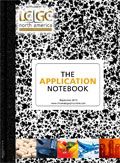Size Exclusion Analysis of Tween-Containing IgG Formulations
The Application Notebook
Supelco
During purification and in final formulation, proteins, including monoclonal antibodies and other biotherapeutic agents, are often in the presence of a low concentration of surfactant (<0.01%) to inhibit protein aggregation or adsorption (1–4). High performance silica-based gel filtration columns, such as 5 μm packed SRT® SEC-300 columns, allow for an accurate assessment of the influence of Tween® 20 or Tween 80 surfactants on the level of aggregation in protein drug formulations.
Polysorbates 20 and 80, commercially available as Tween 20 and Tween 80, are among the most popular non-ionic surfactants used to limit the formation of aggregates in biotherapeutic solutions. Since the presence of aggregates in protein drug formulations may result in an immunological response, manufacturers are required to determine the level of aggregation in such formulations. Size exclusion chromatography is an accepted method to determine the level of aggregation in formulations of biotherapeutic products.
Since the composition of an SEC mobile phase differs from the composition of the formulation, it is important to determine that the mobile phase conditions under which the biotherapeutic elutes from the column, does not influence the level of aggregation that is present in the formulation. Protein aggregates often form irreversible soluble aggregates which are not influenced by the mobile phase composition, although many in-process aggregates do not form irreversibly (4). As part of such a study it is also important to determine the effect of adding surfactant to the sample to ascertain that the surfactant concentration at the time of protein and aggregate elution is similar to the surfactant concentration in the formulation. In this study we investigated the effect of adding Tween 20 and Tween 80 to the elution positions of a proprietary monoclonal antibody (mAb 221) under SEC conditions.
Discussion
We used 25 cm × 4.6 mm i.d. columns packed with 300 Å pore size silica particles of 5 μm size, which were bonded with a hydrophilic functional group. Figure 1 shows the UV traces of successive injections of water, 0.1% Tween 20, mAb 221, and 0.1% Tween 20 added to mAb 221. The chromatogram of a high concentration sample of monoclonal antibody 221 was expanded to clearly show the small aggregate peak in front of the main component. The effect of adding Tween 20 to the sample did not have a measurable effect on the level of aggregate. Note that the nature of the interfering fragment on the trailing side of the main component was not established.

Figure 1: No interference from Tween 20 in SEC of mAb221. Column: SRT SEC-300 (5 μm, 300 à , 4.6 à 30 cm), mobile phase: 150 mM sodium phosphate buffer, pH 7.0; flow rate: 0.35 mL/min, temp.: ambient, pressure: 800 psi, detection: UV@214 nm, sample: mAb 221 #1, inj. volume: 3 μL.
Using the same SRT SEC-300 column, we also looked at the effect of Tween 80 on a lower concentration lot of mAb 221; see Figure 2. This sample showed a smaller aggregate peak, and an additional peak after the main component, while there is at best only a slight indication of a fragment peak interfering with the monoclonal antibody. In this case, we found that adding Tween 80 to the antibody sample changed the aggregate profile, while the large unknown peak eluting at 9.72 min greatly diminished in size.

Figure 2: Effect of Tween 80 on the SEC analysis of mAb 221 by size exclusion chromatography. Conditions as in Figure 1, except sample: mAb 221 #2.
References
(1) S. Bondes and A. Bicknell, Anal. Biochem. 316, 223–231 (2003).
(2) B. Kerwin, J Pharm Sci. 97(8), 2924–2935 (2008).
(3) Aggregation of Therapeutic Proteins, W. Wang and C.J. Roberts, Eds. (John Wiley & Sons, Inc., Hoboken, New Jersey, 2010).
(4) L. Narhi, Y. Jiang, R. Deshpande, S. Kang, and J. Shultz, in Aggregation of Therapeutic Proteins, W. Wang and C.J. Roberts, Eds., (John Wiley & Sons, Inc., Hoboken, New Jersey, 2010), Chapter 6.
SRT and Zenix are registered trademarks of Sepax Technologies, Inc.
Tween is a registered trademark of ICI Americas, Inc.

Supelco/Sigma-Aldrich
595 North Harrison Road, Bellefonte, PA 16823
tel. (800) 359-3041, (814) 359-3441
Website: sigma-aldrich.com/analytical

SEC-MALS of Antibody Therapeutics—A Robust Method for In-Depth Sample Characterization
June 1st 2022Monoclonal antibodies (mAbs) are effective therapeutics for cancers, auto-immune diseases, viral infections, and other diseases. Recent developments in antibody therapeutics aim to add more specific binding regions (bi- and multi-specificity) to increase their effectiveness and/or to downsize the molecule to the specific binding regions (for example, scFv or Fab fragment) to achieve better penetration of the tissue. As the molecule gets more complex, the possible high and low molecular weight (H/LMW) impurities become more complex, too. In order to accurately analyze the various species, more advanced detection than ultraviolet (UV) is required to characterize a mAb sample.














